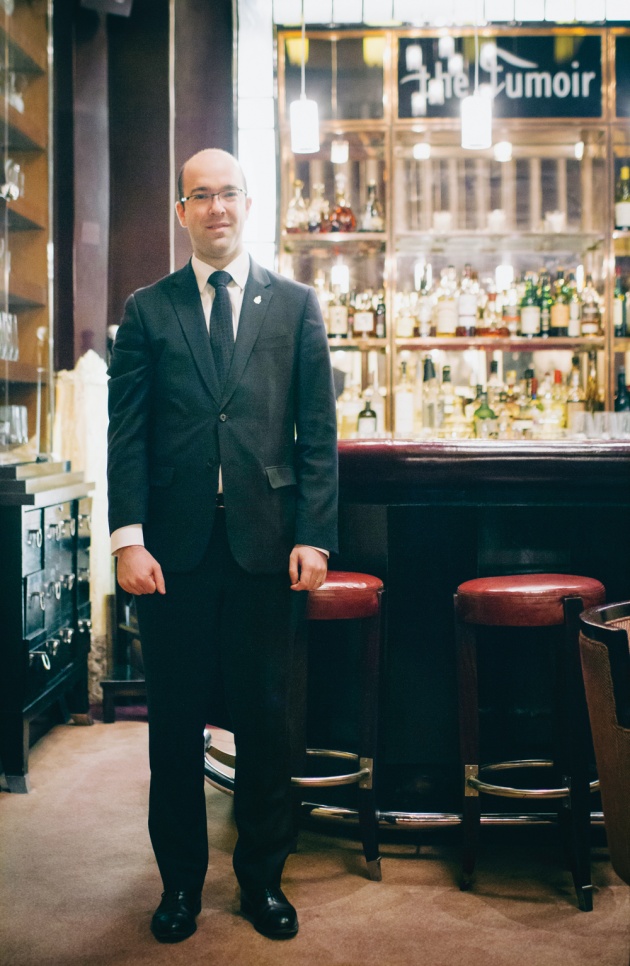Feb/15
5
How lighting is done at Claridge’s
· Posted by admin in LED, LED Candles, LED downlights, Philips LED, Uncategorized
LUX Reports: Hadrien Bera leads a team of 20 engineers responsible for the overall asset management of London’s grand hotel Claridge’s in Mayfair. It’s a challenging role; requirements to save energy aren’t easy to balance with the need to maintain the look and feel of a lavish Grade II listed building with art deco interiors, frequented by the royals and sometimes referred to as the ‘annexe to Buckingham Palace’.
Lux spoke to Bera to find out how he plans to make the lighting in the prestigious, 200-year-old building more efficient.
Lux: What are the biggest lighting challenges you face at Claridges?
Bera: We’ve got a lot of different systems and it is difficult to keep enough stock because a lot is custom-made. That forces me to plan ahead and to create stocks of critical spares so any issues would have as little disruption to the hotel’s operations as possible.
We’ve got chandeliers in the main reception that use incandescent candles, which also comes with challenges: I am looking at replacing these bulbs which are energy hungry and more and more difficult to source but I cannot just replace them with anything. This is one of the first features our many guests will see so it has to look in tone with the rest of the art deco style of our lobby. It’s easier to be creative and to focus on energy efficiency in the back of house areas.
Have you had much experience using LED technology?
We’re replacing all the filament lighting in our suites with LEDs. The project is still in the early stages and I’m experimenting with different LED manufacturers. With this kind of major refurbishment project, we use lighting designers who will specify the best fittings to meet the operational requirements and also the best lighting outputs.
We’ve got 197 guest bedrooms and the amount of lighting will vary from 10 to 50 light fittings per room. In all our latest rooms, the lighting is 100 per cent LED, from the strips in the pelmets and the wardrobes, to the candles in the bedside tables, the GLS in the standing lamps and the spot lights. At this stage, about 50 bedrooms are fully lit with LEDs, so we still have a long way to go.
Do you have energy reduction targets?
There is not a set target in regards to energy saving. The aim is to ensure that we do not compromise on quality and that we do this in the most sustainable way possible. Then, it is up to me to propose projects to accomplish that. I obviously ensure that the energy is not wasted by having a strict maintenance program but this is not enough, we need to be as proactive as possible to ensure we remain at the top of the game.
Is it difficult to justify investments in energy-efficient lighting?
It’s relatively easy if payback is short. Any investment that would take longer than three years to pay for itself would be difficult to justify and anything that would take less than two years would always be preferential. A business case needs to be submitted to show and justify the return on investment. This requires a lot of research and months of trials. That also gives us the time to negotiate with our lighting provider to make sure that we get the best products at the best price.
In my opinion, many people had a bad first impression of LEDs when they were at their developing stages. This is slowly changing but it is up to us, facility managers, to change this by shortlisting the best possible applications, showing the difference in regards to the ‘feel’ LED can provide, the energy consumption and the associated CO2 emission reduction. This is important and this is why this process is so lengthy.
How do you go about installing new lights without disturbing guests?
When we’re satisfied with the lighting products, we have to do a whole bedroom in one go. We’ll do a survey first to ensure we know exactly what is required, place the order, block the room off and then go in one day and replace all the lighting. Once the room has been converted, we would leave it for a couple of months to gain additional feedback from the rest of the team, from the guests and from the hotel management team before we move on to the other rooms.
For the corridors, the same process applies but the work would be carried out at night when we would convert the corridor into sections, which can take up to two or three nights. This is to ensure that the task doesn’t affect the operations of the hotel or disturb our guests.
What other lighting plans do you have for Claridges?
Façade lighting is another project that I am working on. The hotel is a listed building and its architecture is spectacular. It deserves the best façade lighting we can obtain. There are, of course, different ways to achieve this and everything we do has to be submitted to the authorities to gain the mandatory planning permissions.
At the moment I am at the design stage where I am reviewing with a lighting consultant how we can achieve the best results. In previous Lux editions, there have been a lot of interesting case studies, especially the feature on the Science Museum façade lighting replacement. The result was amazing and it was interesting to see their process.
Novel Energy Lighting supplies LED lighting to hotels and the hospitality sector. Please call (T: 0208-540-8287) or visit us today to discuss your needs.
claridges · energy efficient lighting · hospitality lighting · hotel led · hotel lighting · led bulbs · LED Candles · led filament candle · led lighting · Novel Energy Lighting


